
[ad_1]
For movie fanatics, the phrase “Golden Age of Hollywood” evokes a bygone period the place studios reigned supreme, stars captivated audiences, and cinematic innovation flourished on all sides. Spanning roughly from the Thirties to the Sixties, following the beginning of the talkies, this era witnessed the manufacturing of movies that proceed to resonate a long time later, providing not solely situations of visionary filmmaking but in addition worthwhile insights into the cultural and social cloth of their time.
The filmic output was characterised not simply as escapist leisure but in addition as mirroring societal currents, reflecting challenges just like the Nice Despair and collective aspirations for social progress. It was a interval marked by the ascendancy of the so-called “studio system,” the place iconic movie studios resembling MGM, Warner Bros., and Paramount wielded unparalleled affect, churning out a plethora of cinematic gems that proceed to captivate audiences at present.
From witty satires questioning cultural norms to poignant dramas exploring human resilience, these movies supplied numerous narratives that resonated with audiences worldwide. It was a time when charismatic figures like Cary Grant, Humphrey Bogart, and Audrey Hepburn graced the silver display screen, delivering iconic performances that cemented their place in cinematic historical past. Past its charming narratives and enduring stars, the Golden Age witnessed a surge in technical developments. The arrival of sound movie revolutionized storytelling, whereas improvements like Technicolor introduced vibrant hues to narratives.
This text embarks on a journey by means of the guts of Hollywood’s Golden Age, exploring 20 movies that encapsulate the magic, variety, and cultural influence of this extraordinary period. From timeless romances and gripping dramas to unforgettable musicals and groundbreaking experiments in storytelling, these movies stand as testaments to the enduring legacy of Classical Hollywood. Get pleasure from.
1. All Quiet on the Western Entrance (1930)
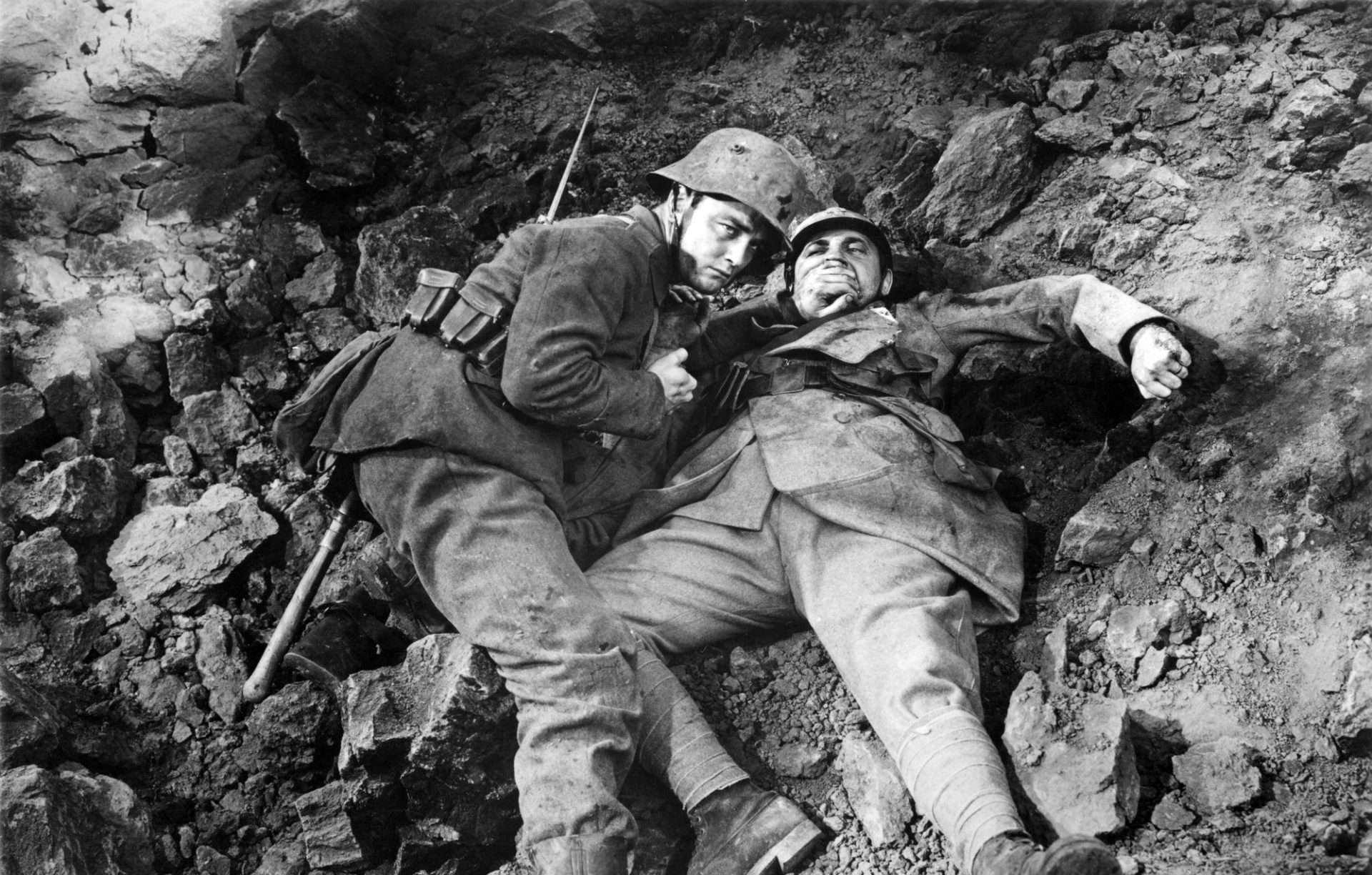
Launched in 1930 amidst the burgeoning sound period, All Quiet on the Western Entrance takes viewers into the trenches of World Struggle I, following a bunch of younger German troopers whose naiveté is ruthlessly stripped away by the horrors of fight. The movie, based mostly on Erich Maria Remarque’s harrowing 1929 novel of the identical title, follows Paul Bäumer (Lew Ayres) and his classmates, fueled by patriotism and propaganda, eagerly enlisting within the struggle.
Nevertheless, their romanticized beliefs shortly crumble as they face the brutal realities of the battlefield – the fixed risk of demise, the dehumanizing situations, and the psychological toll of witnessing unimaginable struggling. Director Lewis Milestone masterfully makes use of the brand new sound expertise to color a visceral portrait of struggle, from the deafening artillery blasts to the agonizing screams of the wounded. He employs lengthy takes and handheld camerawork to plunge the viewers into the trenches, experiencing the claustrophobia and the chaos alongside the troopers.
We see how the troopers’ camaraderie turns into their lifeline, how humor helps them cope, and the way the fixed pressure takes a toll on their sanity. Milestone doesn’t shrink back from displaying the troopers looting, stealing, and even resorting to violence, additional emphasizing the dehumanizing influence of struggle. Regardless of its pacifist anti-war message, which led to it being banned in a number of nations (together with Nazi Germany), the movie was a essential and industrial success. Successful the Academy Award for Finest Image and turning into one of many highest-grossing movies of the yr, the movie went on to affect the likes of Kubrick and Coppola in their very own on-screen portrayals of struggle.
2. Metropolis Lights (1931)
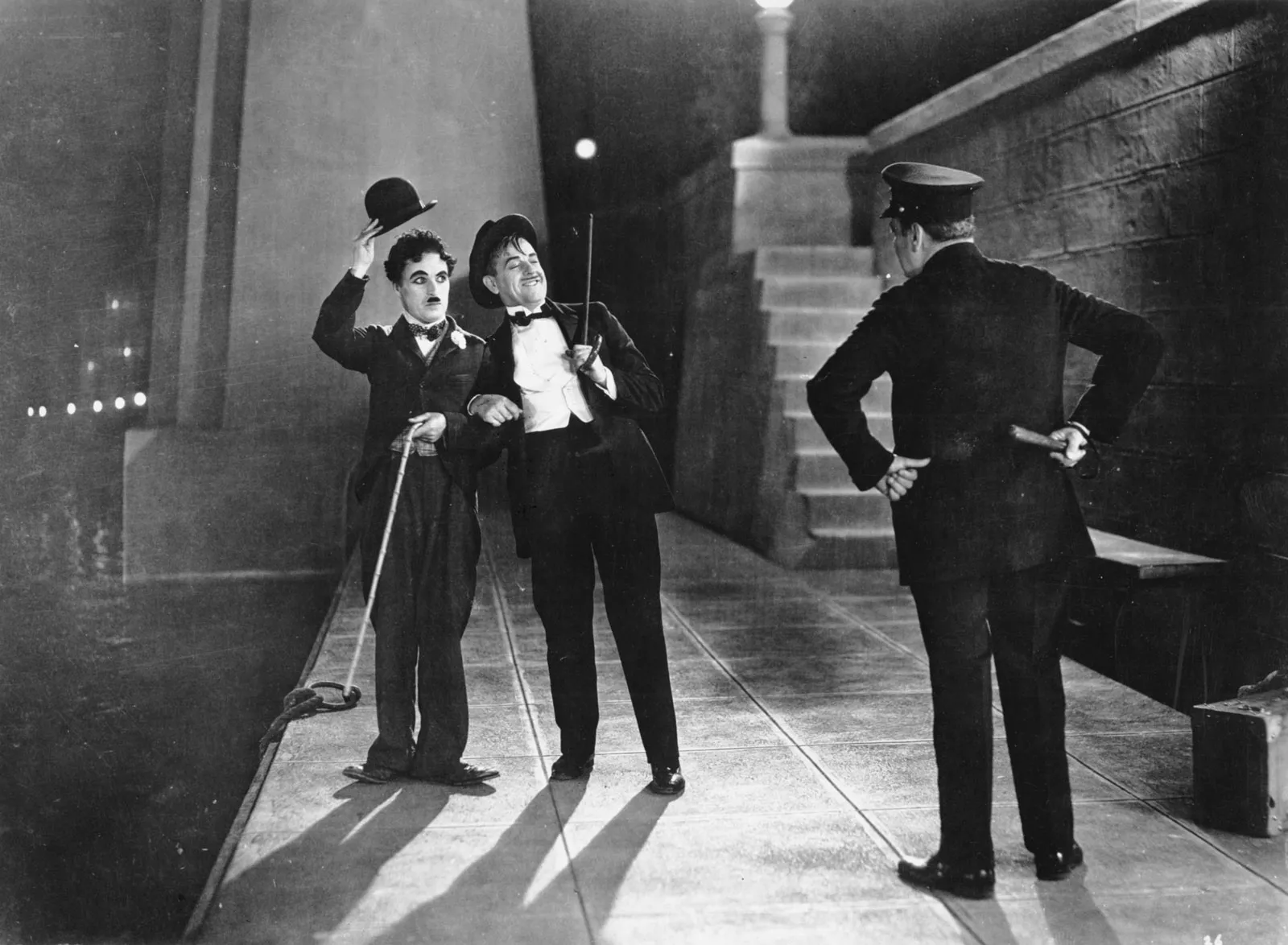
Rising on the daybreak of the “talkies” and in sheer defiance of them, Metropolis Lights stands as a testomony to the enduring energy of silent movie. Charlie Chaplin’s 1931 masterpiece, this romantic comedy-drama, stays a cinematic basic, weaving humor, pathos, and social commentary right into a timeless story. We comply with the enduring Tramp (Charlie Chaplin) navigating the bustling streets of a contemporary metropolis.
He falls in love with a blind flower lady (Virginia Cherrill), unaware of her incapacity. Believing him to be rich, she confides in him her dream of regaining sight. The Tramp, decided to assist, embarks on a collection of comical misadventures, from boxing matches to road cleansing, to lift the cash for her surgical procedure. Chaplin conveys a variety of feelings by means of meticulously crafted pantomime, slapstick, and refined gestures – from the Tramp’s endearing clumsiness to his heartfelt compassion. The movie’s silence permits the rating, composed by Chaplin himself, to fill the emotional void, weaving a poignant counterpoint to the visuals.
Launched amidst the Nice Despair, Metropolis Lights resonated deeply with audiences searching for solace and laughter. Its portrayal of poverty and social injustice, nevertheless humorous, serves as a critique of societal ills. But, in the end, what the movie celebrates is resilience, kindness, and the transformative energy of affection. The movie has left an indelible legacy in influencing the likes of Federico Fellini and Jacques Tati and even administrators eager on portraying social points like Frank Capra and Preston Sturges.
3. Hassle in Paradise (1932)
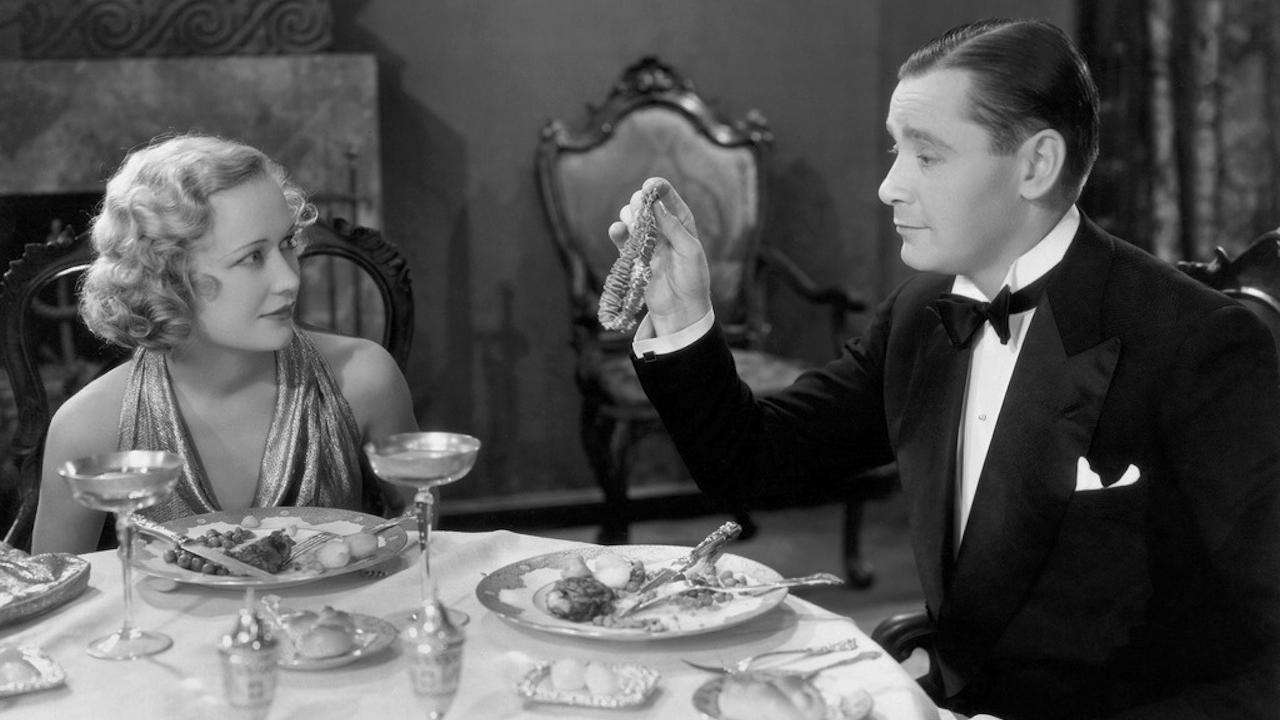
Hassle in Paradise blends witty dialogue, elegant visuals, and a playful tone to ship a pleasant romantic comedy with a touch of heist. Directed by the famend Ernst Lubitsch in pre-Code period Hollywood, the movie stays a timeless basic lauded for its humor, sophistication, and enduring affect. Within the glamorous world of excessive society, a suave jewel thief, Gaston Monescu (Herbert Marshall), masquerades as a baron and meets Lily (Miriam Hopkins), an enthralling pickpocket posing as a countess.
Sparks fly, and so they change into companions in crime and love. Collectively, they land coveted positions with Mariette Colet (Kay Francis), the rich proprietor of a fragrance firm, planning to take advantage of their proximity for a grand heist. Nevertheless, issues come up as Gaston falls genuinely for Mariette, main him to navigate a hilarious juggling act between love, loyalty, and an insatiable need for journey. Hassle in Paradise is a visible feast showcasing the class of Artwork Deco design and opulent costumes. As the primary movie that obtained folks speaking concerning the famed “Lubitsch contact,” it virtually appears to anticipate the Hays Code because it flirts with saucy humor and sexual suggestiveness, usually conveyed by means of witty wordplay and using music.
The movie was a essential and industrial success upon launch, solidifying Lubitsch’s fame as a grasp of comedic wit. Its playful perspective in the direction of morality and sophistication distinctions challenged societal norms, paving the way in which for future screwball comedies and influencing different Hollywood classics like Billy Wilder’s “Double Indemnity” and “Some Like It Scorching.”
4. Stagecoach (1939)
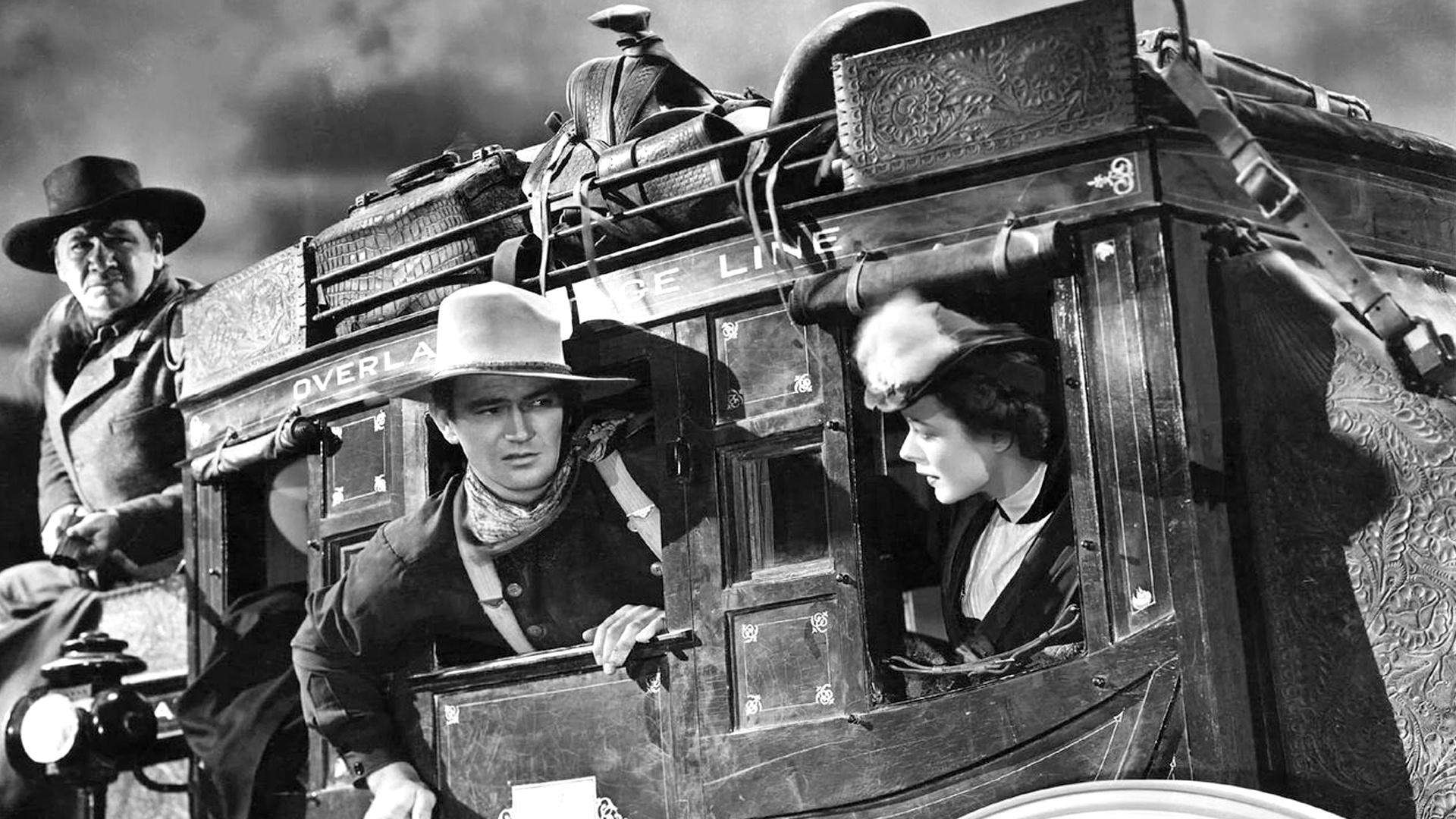
Greater than only a basic Western, John Ford’s 1939 movie Stagecoach is a landmark achievement that redefined the style and set the stage for generations of filmmakers to return. Its journey of a various group of passengers touring by means of treacherous Apache territory in a stagecoach resonates with its poignant mix of gritty realism, highly effective character portraits, and beautiful visuals.
The movie throws collectively an unlikely group on a stagecoach sure for Lordsburg, New Mexico. Dallas (Claire Trevor), a lady ostracized for her previous as a intercourse employee, finds herself alongside a drunken physician (Thomas Mitchell), a pregnant spouse (Louise Platt) touring to affix her soldier husband, a gambler (John Carradine), and a U.S. Marshal (Andy Devine). Amongst them can be Ringo Child (John Wayne), an outlaw searching for revenge.
As they traverse the unforgiving panorama, tensions flare, secrets and techniques are revealed, and surprising bonds of respect and empathy develop. The specter of an Apache assault looms giant, including a layer of suspense and forcing the passengers to confront their internal demons. Not like romanticized Westerns of the previous, Stagecoach portrays the Wild West with a uncooked authenticity. The characters are flawed and sophisticated, every grappling with their very own ethical burdens and societal ostracization.
The movie doesn’t shrink back from portraying violence and hardship, providing a extra grounded and lifelike depiction of the frontier. Ford’s masterful use of Monument Valley as a backdrop additional enhances the realism, capturing the vastness and fantastic thing about the untamed West. Notably, the movie marks John Wayne’s breakthrough function, establishing him as a Western icon along with his portrayal of the brooding but honorable Ringo Child.
5. Gone With the Wind (1939)
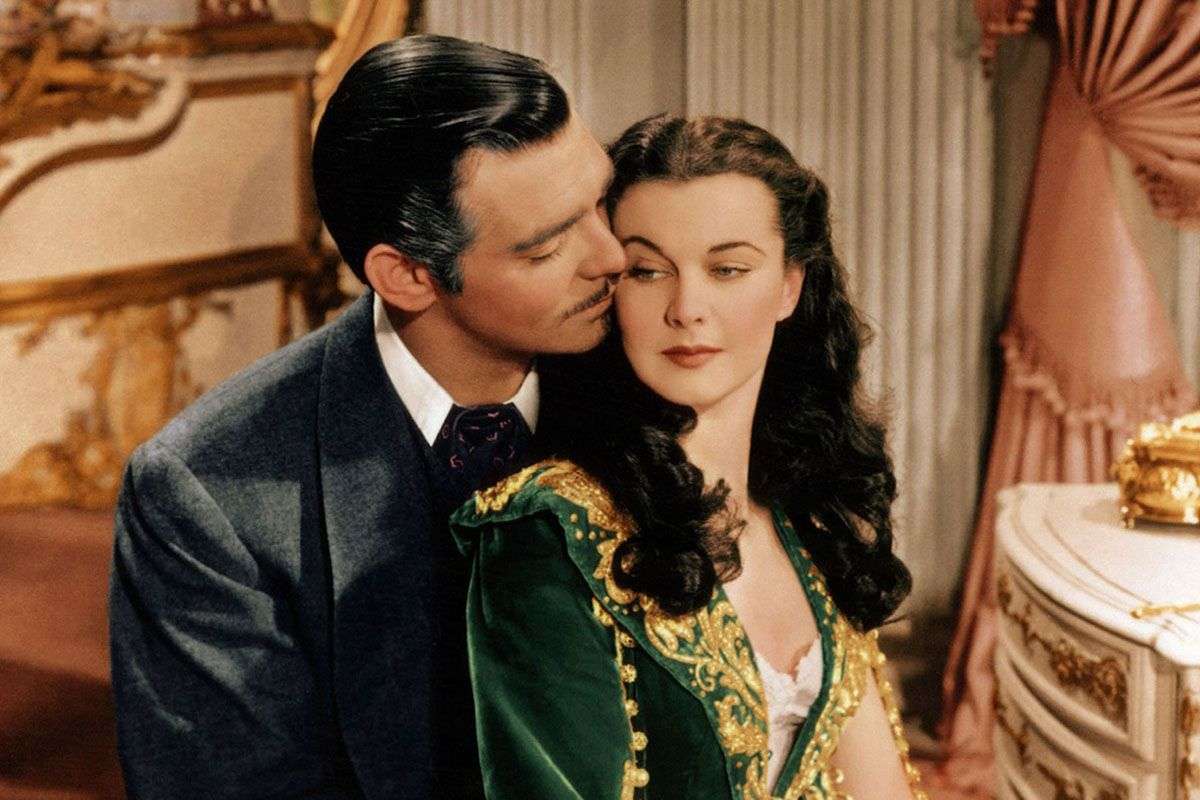
Primarily based on Margaret Mitchell’s Pulitzer Prize-winning novel, Gone With the Wind chronicles the turbulent journey of Scarlett O’Hara (Vivien Leigh), a decided Southern belle navigating private wishes and societal upheaval throughout the Civil Struggle and Reconstruction eras. Its epic scope, charming performances, and technical marvels cemented its place in Hollywood historical past whereas concurrently sparking criticism for its romanticized depiction of the South and its remedy of race.
Scarlett, spoiled and headstrong, finds her idyllic life on the Tara plantation shattered by the struggle. Pushed by an unwavering will to outlive and rebuild her life, she navigates a collection of marriages, tragedies, and private losses. Her coronary heart stays entangled with Ashley Wilkes (Leslie Howard), an enthralling however indecisive gentleman, whereas the sardonic and opportunistic Rhett Butler (Clark Gable) affords her each love and scorn.
The movie charts Scarlett’s transformation from a naive debutante to a ruthless survivor, prepared to bend societal norms and defy expectations to safe her household’s future. Gone With the Wind boasts a staggering scale, with sweeping battle scenes that includes hundreds of extras, elaborate set design capturing the grandeur of Tara and Atlanta, and lavish costumes reflecting the altering occasions.
Using Technicolor, comparatively new on the time, introduced vibrant life to the movie’s visuals, notably within the iconic burning of Atlanta sequence. Vivien Leigh delivers a tour-de-force portrayal of Scarlett, capturing her willpower, ambition, and flaws with nuance. The supporting solid, together with Olivia de Havilland because the light Melanie and Hattie McDaniel within the Oscar-winning function of Mammy, additional cements the movie’s standing as a timeless basic.
6. The Grapes of Wrath (1940)
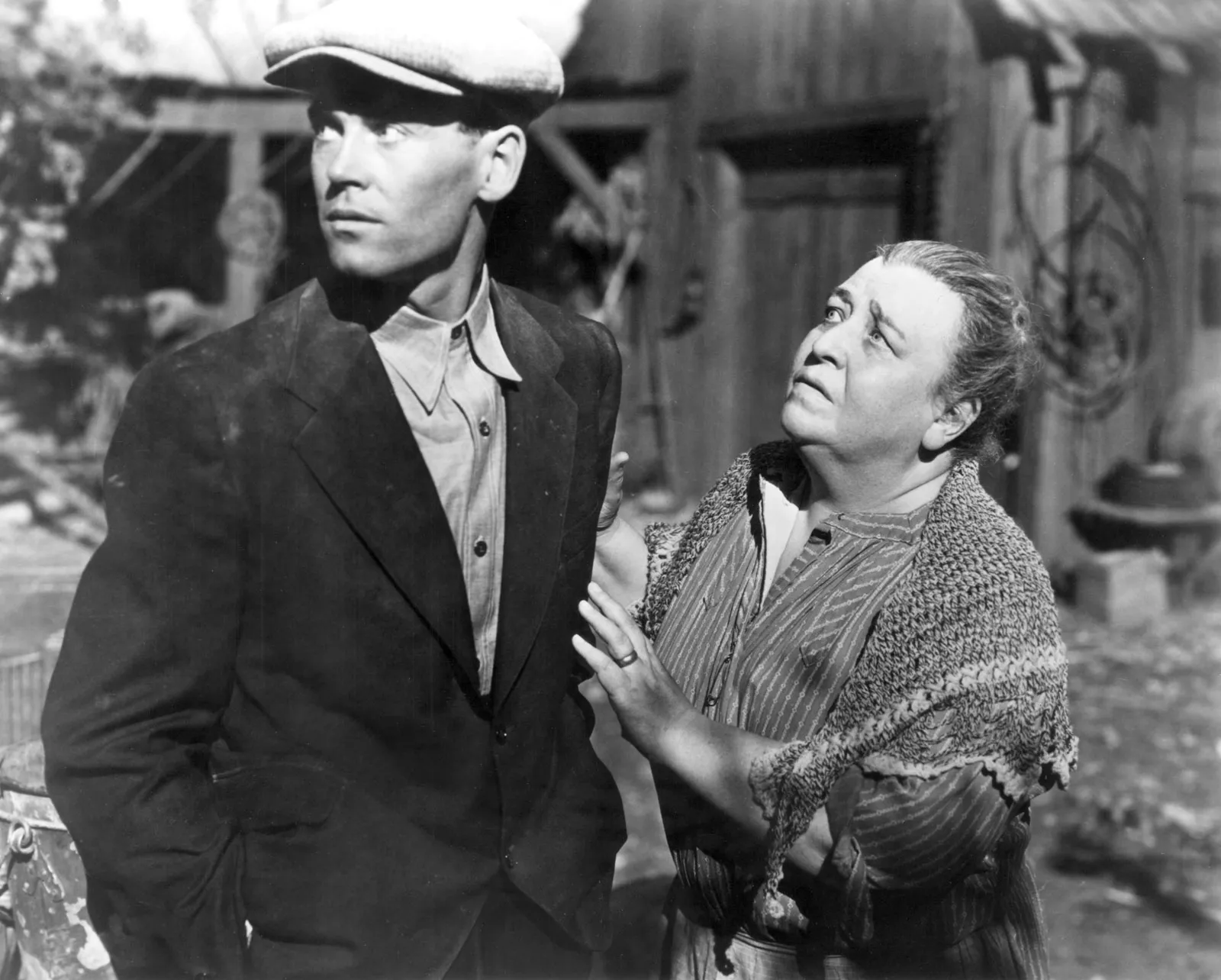
Rising amidst the Mud Bowl’s devastation, John Ford’s 1940 movie The Grapes of Wrath stands as a strong portrayal of human resilience within the face of unimaginable hardship. Tailored from John Steinbeck’s Pulitzer Prize-winning novel, the movie follows the Joad household, pressured to flee their drought-stricken land and embark on a grueling westward migration to California in quest of a greater life.
A household of Oklahoma tenant farmers, the Joads, are reunited with the just lately paroled Tom Joad (Henry Fonda). They pack their meager belongings onto a rickety truck and start their westward trek. The journey is fraught with challenges – breakdowns, starvation, prejudice, and exploitation by the hands of labor camps. Dealing with hunger and sickness, the Joads persevere, clinging to hope and the energy of their household bond. John Ford’s masterful course blends gritty realism with moments of poetic magnificence, capturing the vastness of the panorama and the vulnerability of the characters. Lengthy takes and handheld camerawork immerse the viewers within the immediacy of the characters’ struggles, whereas symbolic imagery, just like the burning automotive representing misplaced hope, provides depth and resonance.
Except for Fonda within the lead, Jane Darwell supplies a heartbreaking portrayal of Ma Joad, the household’s steadfast matriarch. Launched through the Nice Despair, the movie resonated deeply with up to date audiences, sparking dialogue about social injustices and migrant struggling. Whereas initially going through censorship makes an attempt, it emerged as a essential and industrial success, profitable Academy Awards for Finest Image and Finest Director.
7. Citizen Kane (1941)
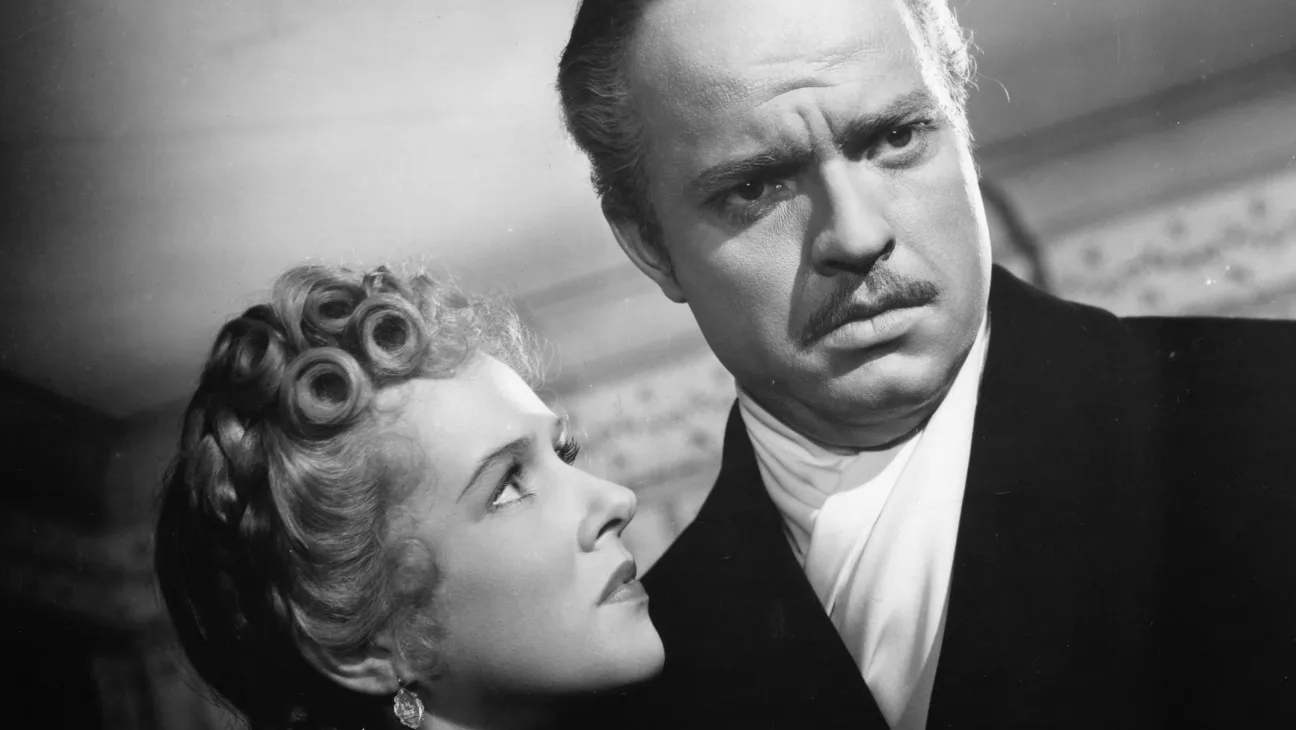
A movie that wants no introduction, Citizen Kane stands as a landmark in movie historical past with its improvements in storytelling, groundbreaking technical achievements, and an enigmatic portrayal of the titular, highly effective, and sophisticated particular person. Directed and co-written by the then-25-year-old Orson Welles, the movie stays a testomony to his audacious imaginative and prescient and continued to encourage debate and intrigue a long time after its launch.
Citizen Kane opens with the demise of media mogul Charles Foster Kane (Welles), his ultimate phrase, “Rosebud,” echoing by means of his huge Xanadu property. A newsreel recounts his rise from poverty to energy, weaving a tapestry of conflicting narratives from those that knew him finest – his pal Jed Leland (Joseph Cotten), his second spouse Susan Alexander (Dorothy Comingore), and his political affiliate Thatcher (George Coulouris).
As every particular person affords their perspective, the true essence of Kane and the that means of “Rosebud” stay shrouded in thriller, the latter a logo open to quite a few interpretations – a misplaced childhood innocence, a signifier of unfulfilled goals, or maybe merely a reminder that the reality about an individual is commonly subjective and multifaceted. The fragmented narrative construction, using flashbacks and conflicting viewpoints, challenges linear storytelling and encourages energetic viewers engagement.
Citizen Kane broke all types of filmmaking conventions with its audacious use of deep focus, permitting a number of planes of motion to be in focus concurrently. Modern digicam angles, together with dramatic low-angle pictures and progressive crane actions, supplied dynamic and subjective views. The movie’s exploration of media manipulation and the development of public personas continues to be all of the extra related in at present’s age of social media and faux information.
8. Casablanca (1942)
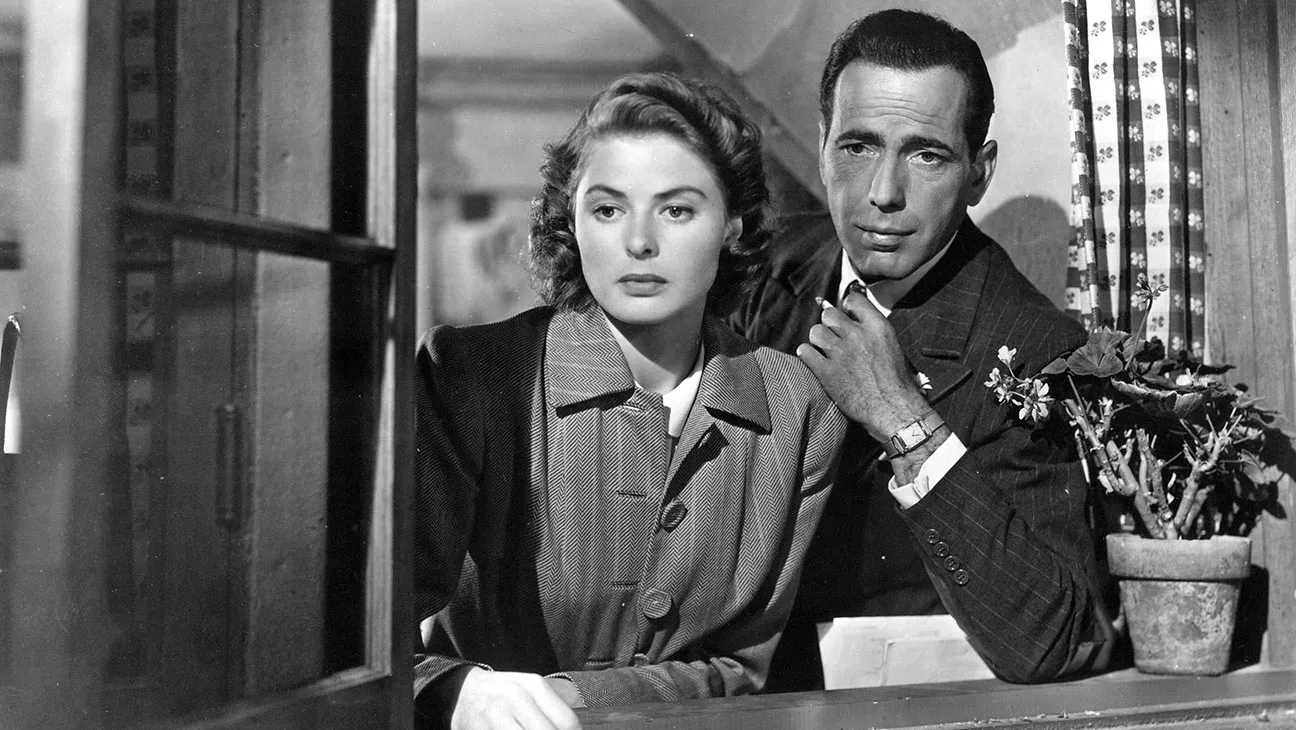
Directed by Michael Curtiz, Casablanca takes us to the titular, bustling, war-torn metropolis in Morocco, the place a cynical nightclub proprietor, Rick Blaine (Humphrey Bogart), harbors refugees searching for escape to America. When his former lover, Ilsa Lund (Ingrid Bergman), arrives along with her husband, Victor Laszlo (Paul Henreid), a key determine within the Czech resistance, Rick is pressured to confront his previous and make a life-altering alternative. Rick and Ilsa share a passionate previous, abruptly reduce quick by the outbreak of struggle.
Now with Victor main the battle in opposition to Nazism, Rick hesitates to assist them escape, fueled by each emotional turmoil and pragmatism. He turns into entangled in an online of wartime politics, torn between his wishes, his ethical compass, and the potential penalties of his actions. Whereas the central romance between Rick and Ilsa varieties the emotional core, Casablanca affords a broader canvas of human tales. There’s the cynical Captain Renault (Claude Rains), torn between obligation and humanity; Sam (Dooley Wilson), Rick’s loyal pianist who embodies hope and optimism; and the determined refugees clinging to the dream of freedom. Every character provides depth and nuance, showcasing the human value of struggle and the craving for survival and normalcy.
Launched throughout World Struggle II, Casablanca resonated with audiences searching for hope and inspiration within the face of a world battle, whereas the movie’s portrayal of sacrifice and ethical selections sparked discussions about wartime dilemmas and the battle in opposition to fascism. Its romantic narrative impressed numerous movies in its wake, whereas its exploration of ethical complexities paved the way in which for extra nuanced portrayals of struggle realities.
9. Double Indemnity (1944)
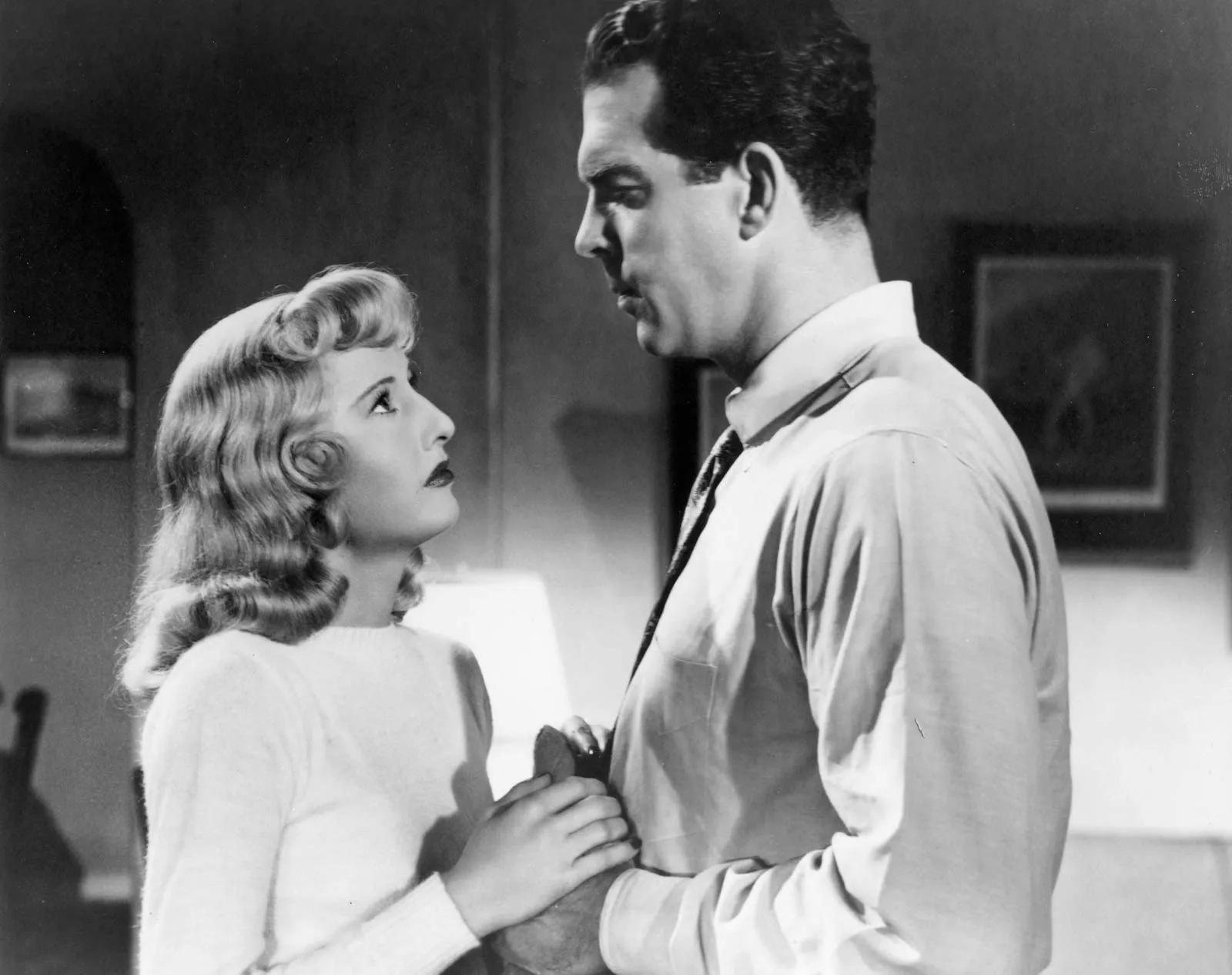
Billy Wilder adapts James M. Cain’s novel on this chilling masterpiece of suspense and ambiguity that set a brand new excessive benchmark for the movie noir style. Double Indemnity follows a seemingly upstanding insurance coverage salesman, Walter Neff (Fred MacMurray), as he turns into entangled in a seductive internet of adultery, homicide, and deceit orchestrated by Phyllis Dietrichson (Barbara Stanwyck), a crafty housewife searching for to eradicate her rich husband.
Discontented along with her rich however controlling husband, Phyllis hatches a diabolical plan – to eradicate him for an exorbitant double indemnity payout on his life insurance coverage coverage. Walter, initially repulsed by the proposition, falls prey to Phyllis’s seductive appeal and calculating manipulation. He agrees to orchestrate the “accident,” setting in movement a collection of occasions that spiral in the direction of a deadly finish.
Walter, leveraging his insurance coverage experience, cleverly crafts a seemingly foolproof plan, arranging for the husband to be “pushed” from a shifting practice. Nevertheless, their meticulously constructed scheme is fraught with unexpected snags and surprising witnesses. The strain escalates as Walter, haunted by guilt and suspicion, desperately makes an attempt to cowl his tracks whereas navigating the watchful eyes of his more and more skeptical boss, the tenacious Barton Keyes (Edward G. Robinson).
Wilder’s masterful use of chiaroscuro lighting paints a world of ethical ambiguity, the place shadows conceal hidden wishes and truths. The chilling voice-over narration by Walter supplies an intimate glimpse into his conflicted psyche, exposing the turmoil and regret simmering beneath his composed exterior. Double Indemnity continues to be a modern-day basic, as deeper analyses reveal the movie’s refined commentary on societal themes like gender roles, the attract of the American Dream, and the financial anxieties of the post-war period.
10. It’s a Great Life (1946)
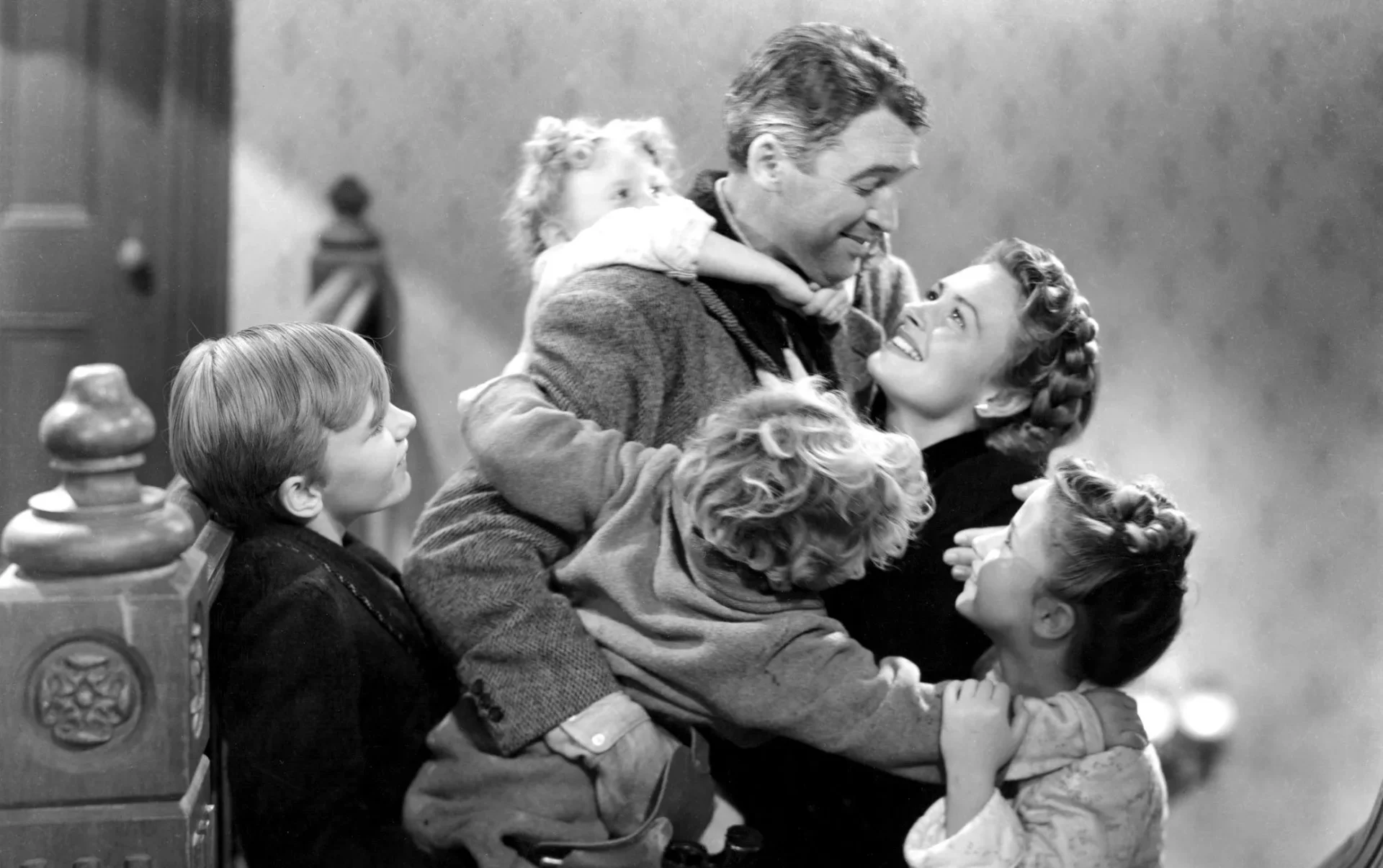
As Bedford Falls prepares for Christmas Eve, George Bailey (James Stewart), a kind-hearted however perpetually burdened man, finds himself drowning in monetary woes. His household financial savings and mortgage enterprise is on the breaking point, because of the grasping machinations of the nefarious Mr. Potter (Lionel Barrymore). Overwhelmed by debt and a way of failure, George contemplates suicide, wishing he had by no means been born.
Unbeknownst to George, his despair reaches the ears of Clarence Odbody (Henry Travers), a second-class angel on the verge of incomes his wings. Clarence is shipped to Earth with a vital mission: to point out George what life in Bedford Falls would have been like had he by no means existed. Via a collection of poignant flashbacks and alternate realities, Clarence guides George by means of a chilling imaginative and prescient of a bleak Bedford Falls with out him. His childhood sweetheart Mary (Donna Reed) stays single, his brother Harry loses his life, and the city, below Potter’s management, has change into a chilly, joyless place. Embracing his life with renewed appreciation, George returns to the current, able to confront his challenges with newfound energy and optimism. The group rallies round him, providing their help and assets, proving that his life certainly has value and function.
As Christmas dawns, Bedford Falls celebrates not simply the vacation but in addition the renewed spirit and hope embodied by George Bailey. Whereas undoubtedly a feel-good vacation basic, It’s a Great Life additionally prompts deeper reflection past its style trappings, exploring themes of psychological well being, social justice, and the risks of unchecked capitalism – points that stay related in at present’s world. Capra’s masterful course blends sentimentality with refined social commentary, highlighting the struggles of small-town communities in opposition to company greed and financial hardship.
Additionally associated to the Golden Age of Hollywood: Each Finest Image Oscar Winner Ever
11. The Finest Years of Our Lives (1946)
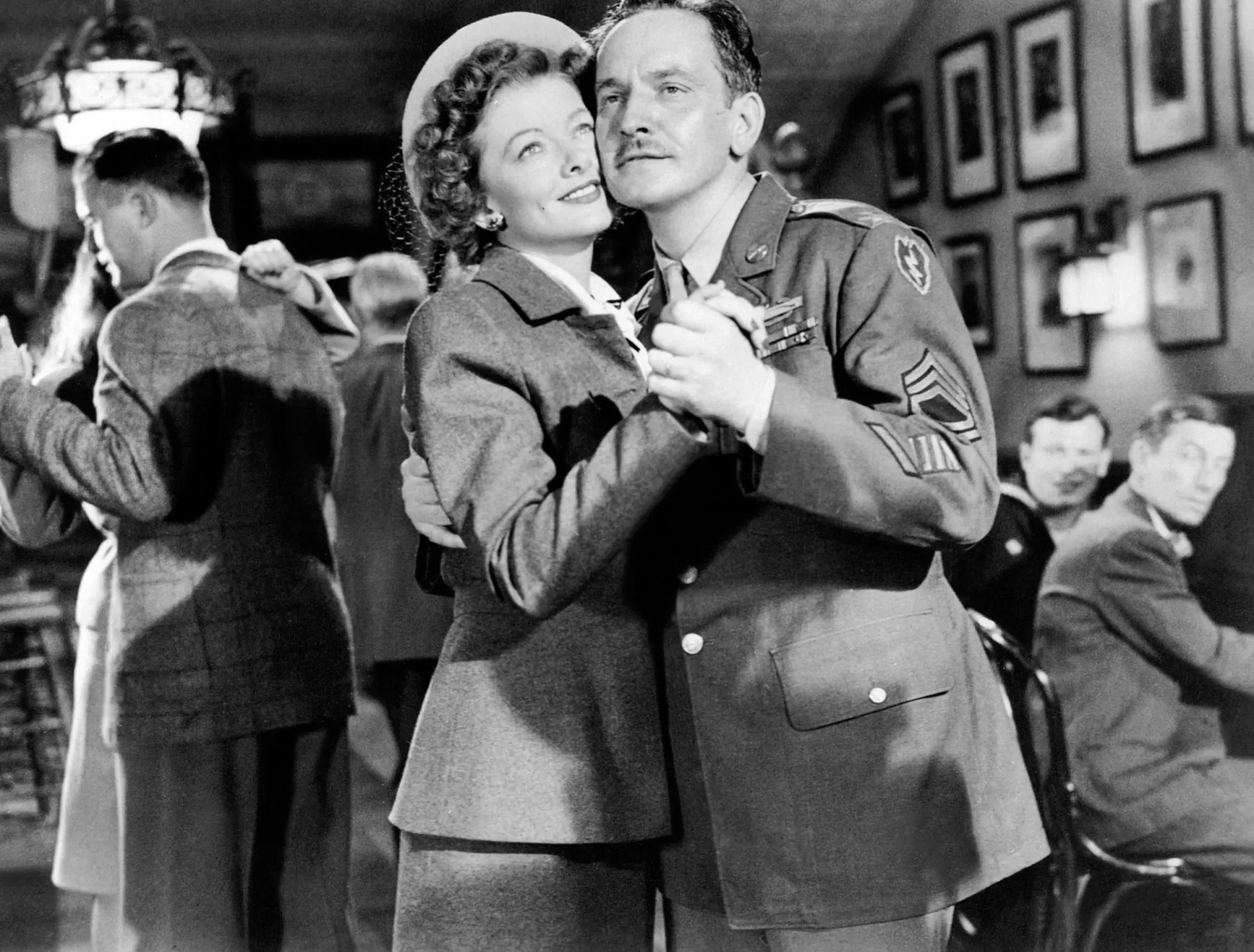
Launched within the wake of World Struggle II, Wyler’s The Finest Years of Our Lives eschews sugary nostalgia for a poignant and unflinching exploration of three returning veterans struggling to navigate the complexities of reintegration into civilian life. Al Stephenson (Fredric March), a middle-aged infantryman, faces marital pressure and struggles to seek out his place in his household enterprise. Fred Derry (Dana Andrews), a bombardier adorned for heroism, finds his soda-jerk job underwhelming and grapples with unemployment. Homer Parrish (Harold Russell), a sailor who misplaced each palms within the struggle, seeks to rebuild his life along with his fiancée Wilma whereas battling anxieties about societal acceptance.
Whereas seemingly victorious, the boys carry invisible scars, their struggles highlighting the emotional and psychological toll of struggle that extends far past bodily accidents. Al turns into a mentor to Homer, serving to him alter to his disabilities, whereas Fred reconnects with Peggy, Al’s daughter, discovering solace and understanding of their shared disillusionment. The movie’s technical prowess goes hand-in-hand with its highly effective message.
Using lengthy takes and handheld camerawork immerses the viewers within the characters’ experiences. Symbolic imagery, like the fireplace engulfing Atlanta in Al’s dream, underscores the psychological trauma. Whereas initially praised for its hopeful ending, the movie’s legacy has advanced. Fashionable audiences acknowledge its bittersweet nature because the challenges confronted by the characters, from unemployment to PTSD, stay painfully related in at present’s context. The movie’s enduring essential acclaim, together with eight Academy Awards, has cemented its place in historical past.
12. The Treasure of Sierra Madre (1948)
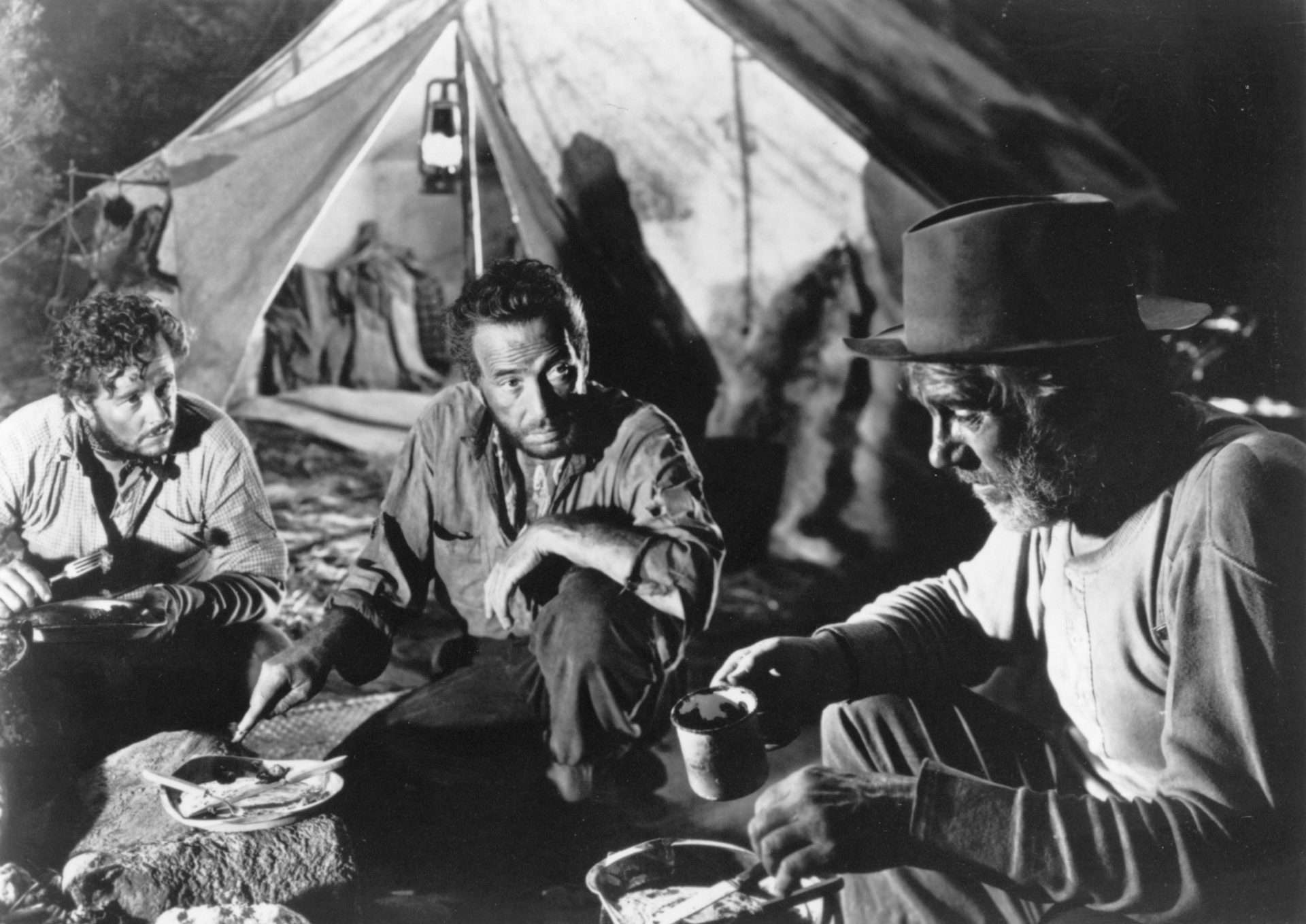
Below the scorching Mexican solar amidst the dusty wilderness of the Sierra Madre mountains unfolds a story of ambition, betrayal, and the corrosive energy of gold. John Huston’s 1948 masterpiece, The Treasure of Sierra Madre, plunges us into the lives of two down-on-their-luck People, Dobbs (Humphrey Bogart) and Curtin (Tim Holt), determined for a break of their string of unhealthy luck.
Drawn by whispers of hidden riches, they be a part of forces with Howard (Walter Huston, the director’s father), a grizzled prospector, and embark on a deadly journey into the unknown. As they endure scorching days, treacherous terrain, and dwindling provides, their preliminary optimism offers option to suspicion and paranoia. Their discovery of a gold vein ignites a euphoric frenzy, however the celebration is short-lived. The lure of wealth proves too sturdy, fracturing their fragile bond.
Dobbs, haunted by previous failures and fueled by a rising lust for wealth, turns into more and more risky. Curtin, initially hesitant, is progressively drawn into the vortex of greed. Howard, the seasoned prospector, watches with weary cynicism as their goals of riches morph right into a nightmare. The movie’s stark black-and-white cinematography fantastically captures the tough magnificence and the unforgiving nature of the Mexican panorama, mirroring the characters’ inner struggles.
Their descent into darkness isn’t romanticized however introduced with unflinching honesty, prompting viewers to query their very own values and vulnerabilities. The movie’s exploration of greed and its penalties has left a cinematic legacy spawning numerous Westerns and thrillers that adopted it, from Sergio Leone’s spaghetti Westerns to trendy neo-noir movies.
13. All About Eve (1950)
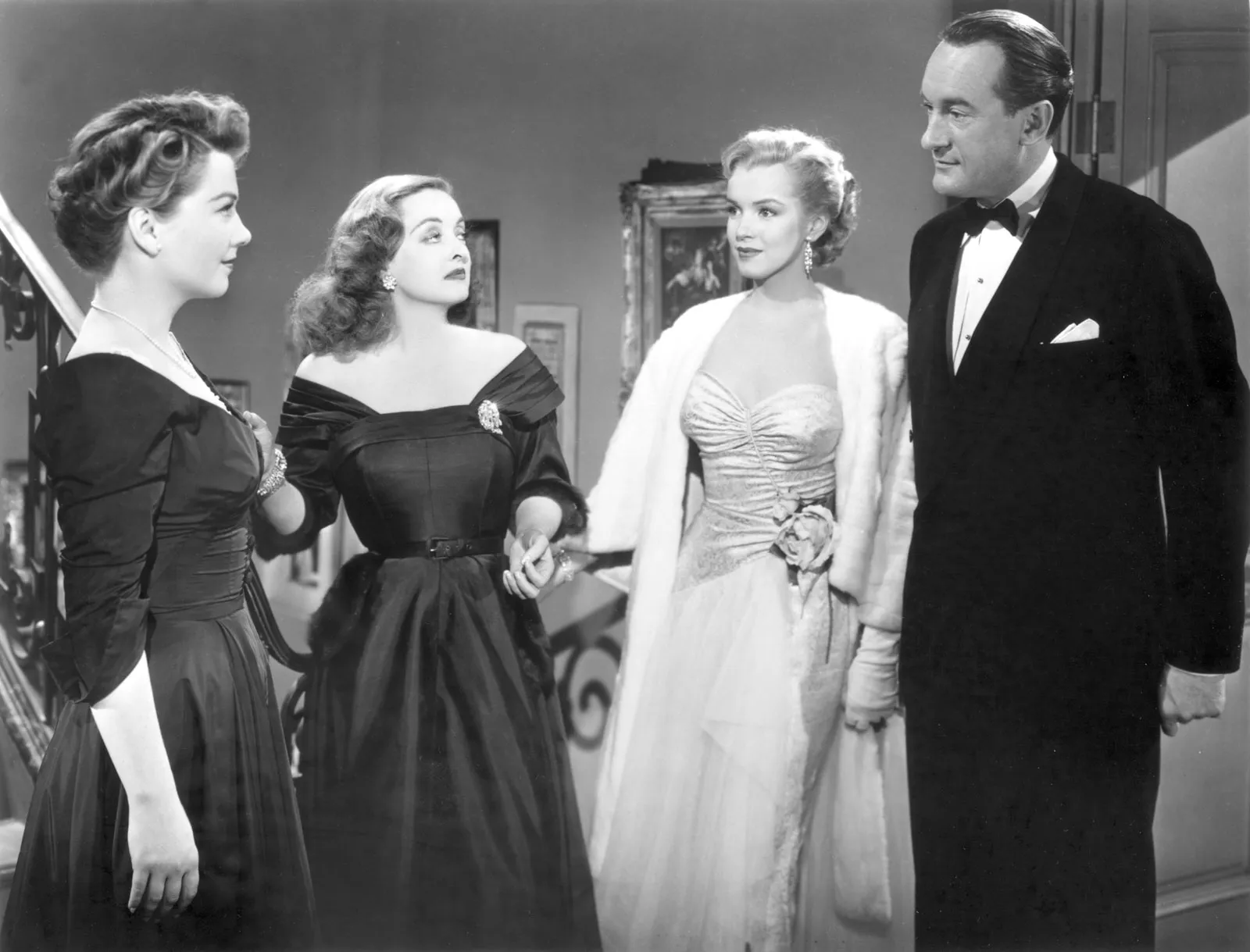
All About Eve transcends the brilliant lights of Broadway to supply a darkly compelling exploration of ambition, deception, and the corroding energy of envy. With its razor-sharp dialogue, unforgettable performances, and progressive narrative buildings, the movie cemented itself as a Hollywood landmark, charming audiences with its portrayal of each the attract and the underbelly of the theatrical world.
Margo Channing (Bette Davis), a celebrated but ageing stage actress, basks within the admiration of her friends and followers even amidst creeping worries about her fading youth. Enter Eve Harrington (Anne Baxter), a seemingly harmless and devoted fan who insinuates herself into Margo’s circle. Beneath the veil of naivety lurks a crafty and ruthless spirit fueled by an insatiable starvation for fame and recognition.
Eve skillfully good points the belief of Margo’s internal circle, together with her playwright pal Lloyd Richards (George Sanders) and director Invoice Sampson (Gary Merrill). With every calculated transfer, Eve inches nearer to Margo’s highlight, feeding on her anxieties and exploiting her vulnerabilities. We witness Margo’s insecurities clashing with Eve’s unwavering ambition, making a poisonous and manipulative dynamic that escalates right into a dramatic showdown.
The movie’s utilization of witty dialogue and deep focus permits a number of layers of feelings to play out concurrently, conserving the viewer captivated. Again in its day, other than its essential acclaim and award success, the movie sparked vital discussions about ageing in Hollywood, the perils of ambition, and the advanced dynamics of feminine friendships.
14. Sundown Boulevard (1950)
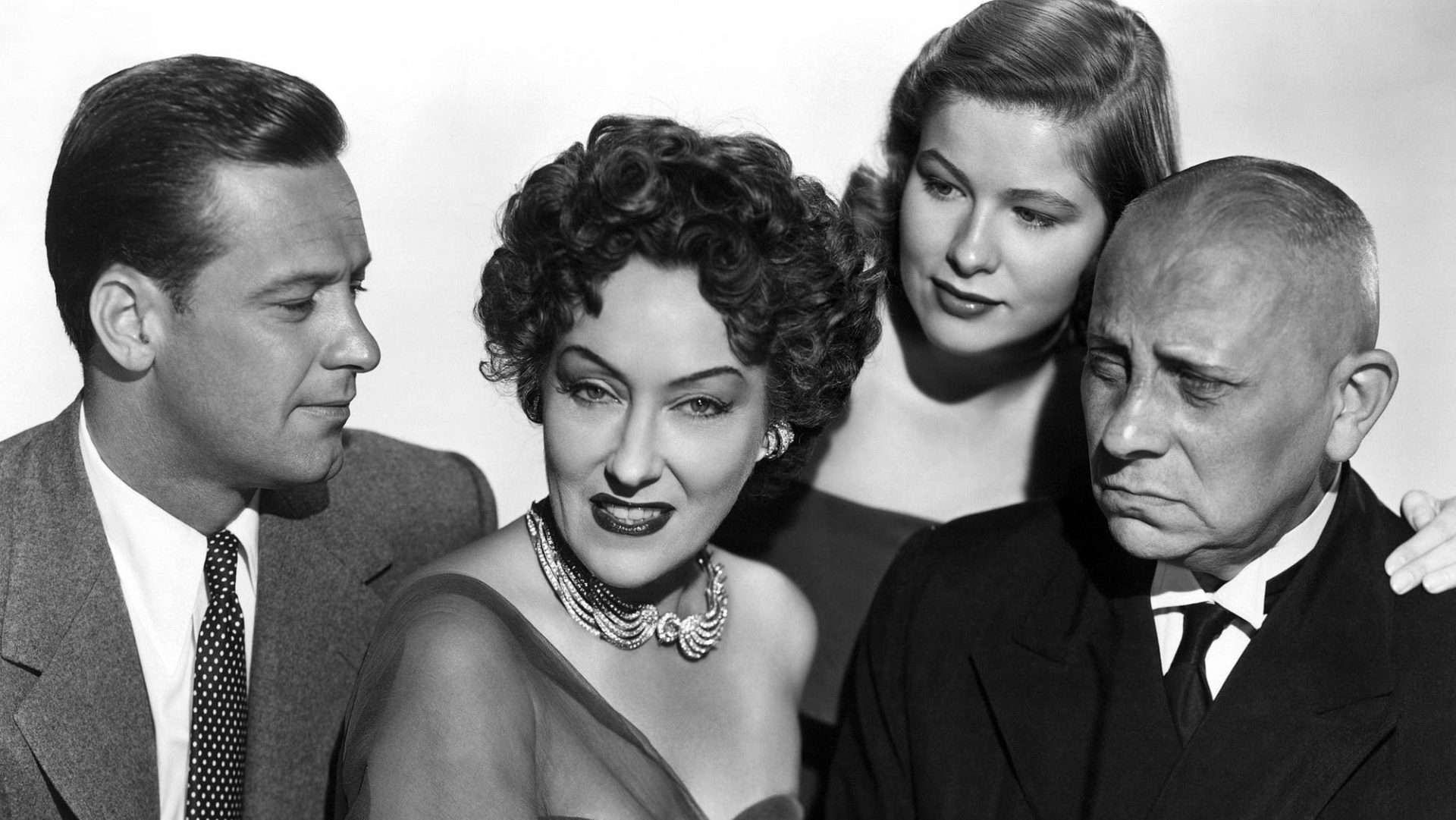
A chilling odyssey into the depths of light glory, unfulfilled goals, and the devastating energy of delusion, Sundown Boulevard paints a stark portrait of Hollywood’s underbelly the place forgotten stars cling to the previous, and desperation festers beneath a shimmering facade. Joe Gillis (William Holden), a down-on-his-luck screenwriter, finds himself drawn to the opulent mansion of Norma Desmond (Gloria Swanson), a silent movie celebrity residing in reclusive obscurity.
Blinded by her wealth and guarantees of reviving his profession, Joe turns into entangled in a twisted internet of manipulation and delusion. Norma is satisfied that she’s destined for a triumphant comeback and makes use of Joe to rewrite her script, feeding his desperation with empty guarantees. As Joe delves deeper into Norma’s delusional world, the road between actuality and fantasy blurs. He turns into her confidante, chauffeur, and reluctant lover, witnessing her erratic habits fueled by an unshakeable perception in her previous glory. In the meantime, his profession crumbles, and his sense of self deteriorates below the suffocating affect of Norma’s obsession.
The movie’s masterful use of chiaroscuro lighting casts Norma’s mansion in each grandeur and shadows, mirroring the duality of her character and highlighting the stark distinction between Norma’s opulent previous and her decaying current. Gloria Swanson delivers a career-defining efficiency, embodying Norma’s fading grandeur and fragile ego with mesmerizing depth. And complementing her, William Holden completely captures Joe’s descent from desperation to disillusionment, showcasing a conflicted man trapped in a gilded cage. Whereas Joe’s tragic destiny serves as a cautionary story, Norma’s tragedy evokes a way of empathy for a forgotten star whose goals flip right into a residing nightmare.
15. Ace within the Gap (1951)
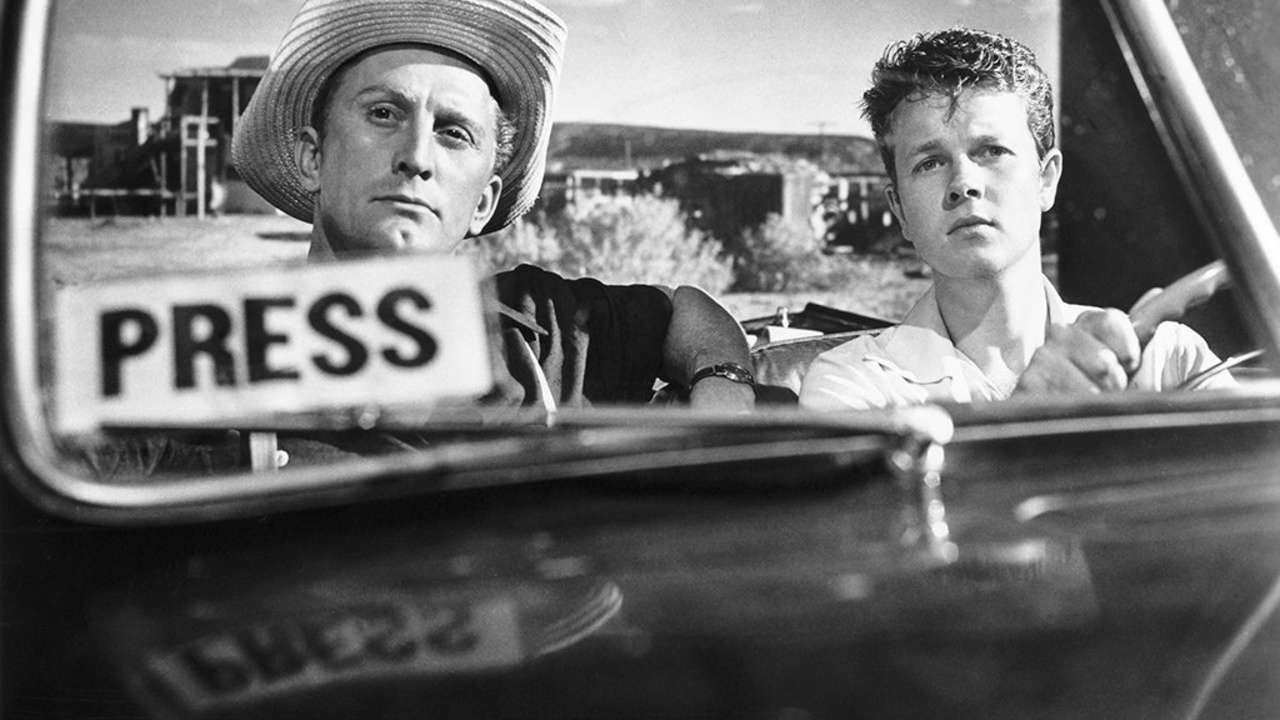
Ace within the Gap is a venomous sting directed on the media, sensationalism, and the callous manipulation of human struggling for private acquire. With its cynical narrative, progressive camerawork, and unforgettable performances, the movie stays a provocative commentary on the darkest corners of human nature and the insatiable starvation for a spectacle.
Chuck Tatum (Kirk Douglas), a down-on-his-luck newspaper reporter, finds himself in a dusty New Mexico city when a cave-in traps a neighborhood man, Leo Minosa (Richard Benedict), in an deserted mine shaft. With a scoop in his sights, Chuck persuades development contractor Smollett (Frank Jaquet) to delay Leo’s rescue, turning the ordeal right into a media circus and exploiting Leo’s plight for his personal profession development.
Chuck manipulates Sheriff Stanley (Ward Bond) and the townfolk, remodeling the tragedy right into a carnivalesque occasion with meals distributors, playing, and stay broadcasts. Nevertheless, the human value of this media frenzy turns into more and more evident. Leo’s bodily and psychological state deteriorates whereas his spouse Lorraine (Jan Sterling) grapples with despair and anger at Chuck’s manipulations. The city descends into chaos, fueled by playing, alcohol, and voyeurism.
Chuck, initially fueled by ambition, begins questioning his morality as the results of his actions unfold. Ace within the Gap is a technical marvel, using claustrophobic close-ups inside the mine, highlighting Leo’s struggling whereas contrasting them with broad pictures of the bustling crowds, emphasizing the disconnect between their leisure and the actual tragedy. Using handheld camerawork and stark visuals provides to the documentary-like really feel, blurring the strains between fiction and actuality.
16. Roman Vacation (1953)
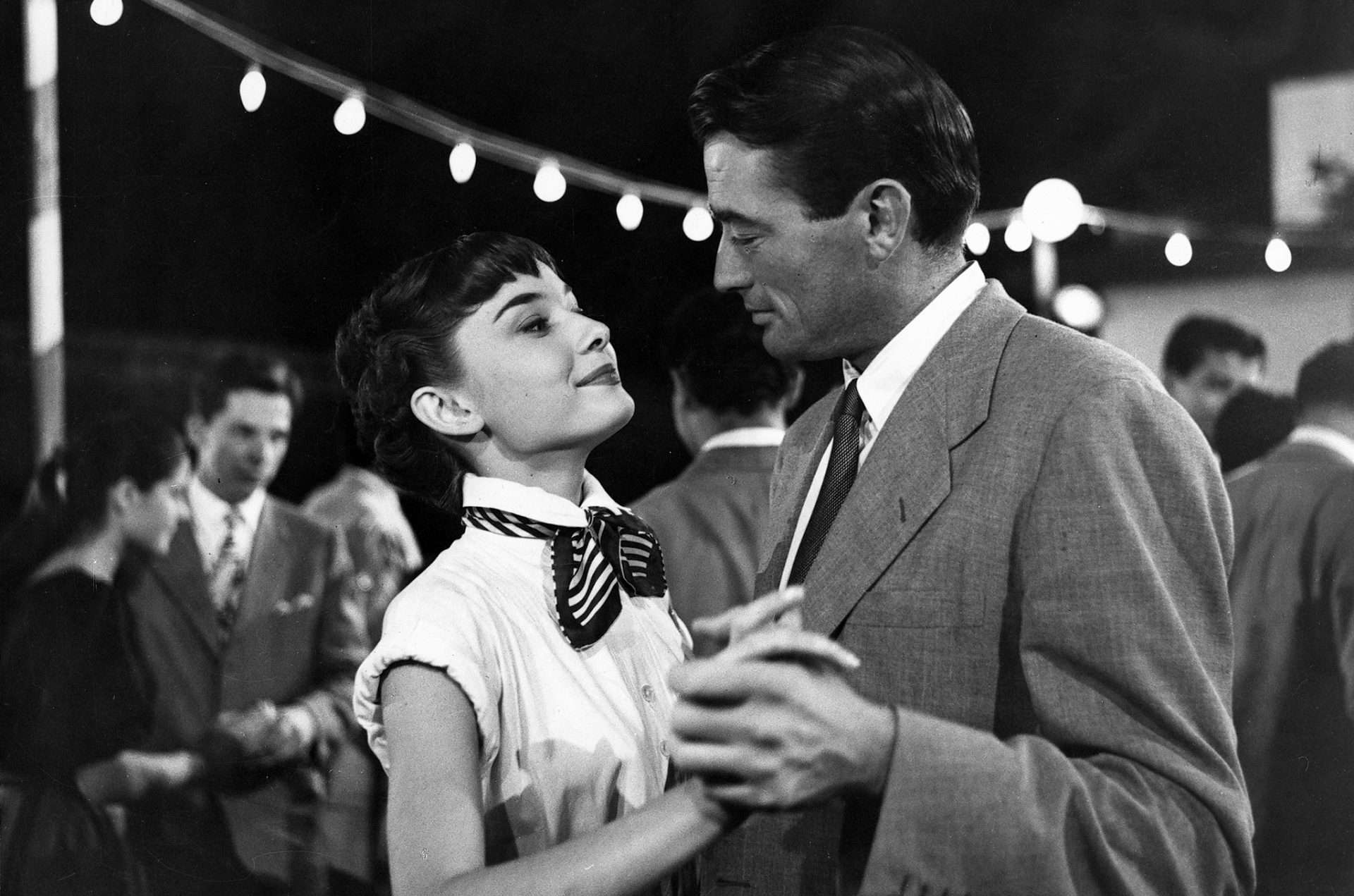
William Wyler’s iconic 1953 movie transcends mere romantic appeal to seize the fleeting pleasure of freedom in its story of Princess Ann (Audrey Hepburn), a stifled royal on a tiresome European tour who escapes her regimented schedule for a day of surprising journey in Rome. Disguised as a commoner, she wanders the colourful streets, basking within the anonymity and easy pleasures denied to her royal persona. As destiny would have it, she encounters Joe Bradley (Gregory Peck), an American reporter who stumbles upon the princess’s impromptu escapade and finds himself caught in a whirlwind romance not like every other.
Initially unaware of Ann’s true identification, Joe is charmed by her real curiosity and zest for all times. He agrees to be Ann’s information for the day, unaware that he’s launched into an journey with royal penalties. As they discover the enduring landmarks of Rome – the Spanish Steps, Trevi Fountain, and the Colosseum – a real connection blossoms between Ann and Joe. They share gelato, journey a motor scooter by means of bustling streets, and snort below the Roman moonlight. The chemistry between Hepburn and Peck is palpable, including layers of appeal and sincerity to the movie.
As nightfall approaches, the seek for the lacking princess intensifies, forcing Ann to confront the inevitable return to her suffocating royal life. Joe, torn between his rising emotions and his journalistic integrity, wrestles with a troublesome choice. Roman Vacation is widely known for its impeccable storytelling, mixing humor, romance, and a contact of bittersweet actuality.
Henri Alekan’s cinematography captures the timeless fantastic thing about Rome, utilizing iconic areas to create a picturesque backdrop for the unfolding romance. The screenplay, penned by Dalton Trumbo and then-blacklisted Ian McLellan Hunter, received the Academy Award for Finest Writing, regardless of Hunter serving as a entrance for Trumbo because of the Hollywood blacklist.
17. On the Waterfront (1954)
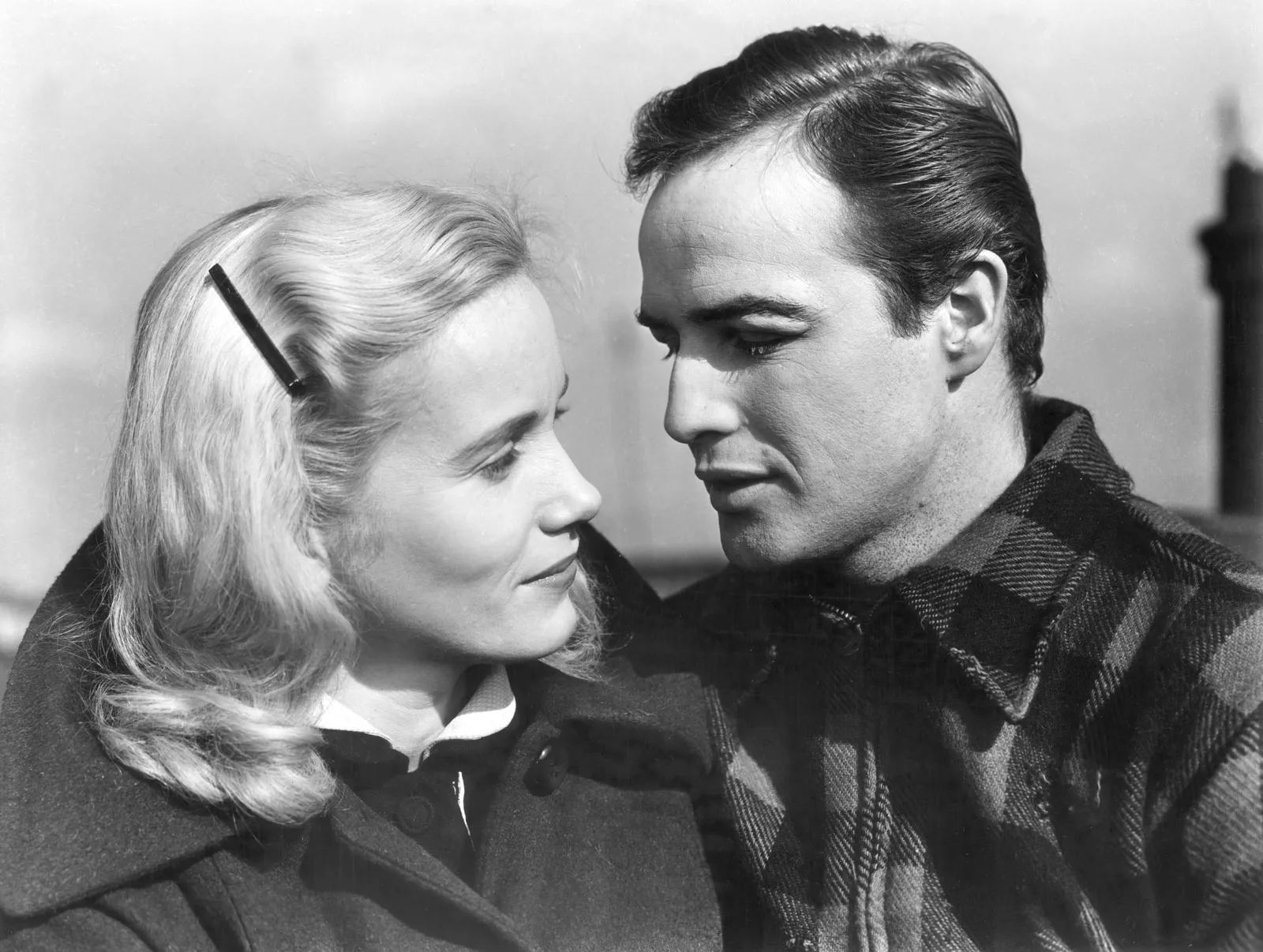
Starring Marlon Brando in certainly one of his most iconic roles, On the Waterfront explores themes of corruption, redemption, and particular person conscience within the gritty backdrop of a New Jersey waterfront. Terry Malloy (Marlon Brando), hardened by his previous failures and fueled by a cynical outlook, turns a blind eye to the injustices round him. He runs errands for the ruthless Johnny Pleasant (Lee J. Cobb), turning a deaf ear to whispers about rigged fights and lethal accidents.
The arrival of Father Mike (Karl Malden), a priest harboring a private connection to a waterfront tragedy, ignites a spark of conscience inside Terry. He witnesses the devastating influence of corruption firsthand, forcing him to grapple along with his complicity and the results of inaction. Torn between loyalty to his mob ties and a burgeoning moral sense, Terry navigates a treacherous path. He faces intimidation, threats, and violence, testing his resolve and exposing the depths of the mob’s cruelty. The movie masterfully builds stress, immersing viewers within the claustrophobic ambiance of concern and uncertainty that permeates the docklands.
Kazan’s course, coupled with Boris Kaufman’s cinematography, captures the uncooked essence of the waterfront setting whereas Leonard Bernstein’s haunting rating, with its evocative compositions, enhances the gritty realism of the visuals. Using on-location taking pictures lends authenticity to the movie, with the tough, industrial panorama reflecting the harshness of the characters’ lives. On the Waterfront was a essential and industrial success, dominating the 1955 Academy Awards by profitable eight Oscars, together with Finest Image, Finest Director, and Finest Actor.
18. 12 Indignant Males (1957)
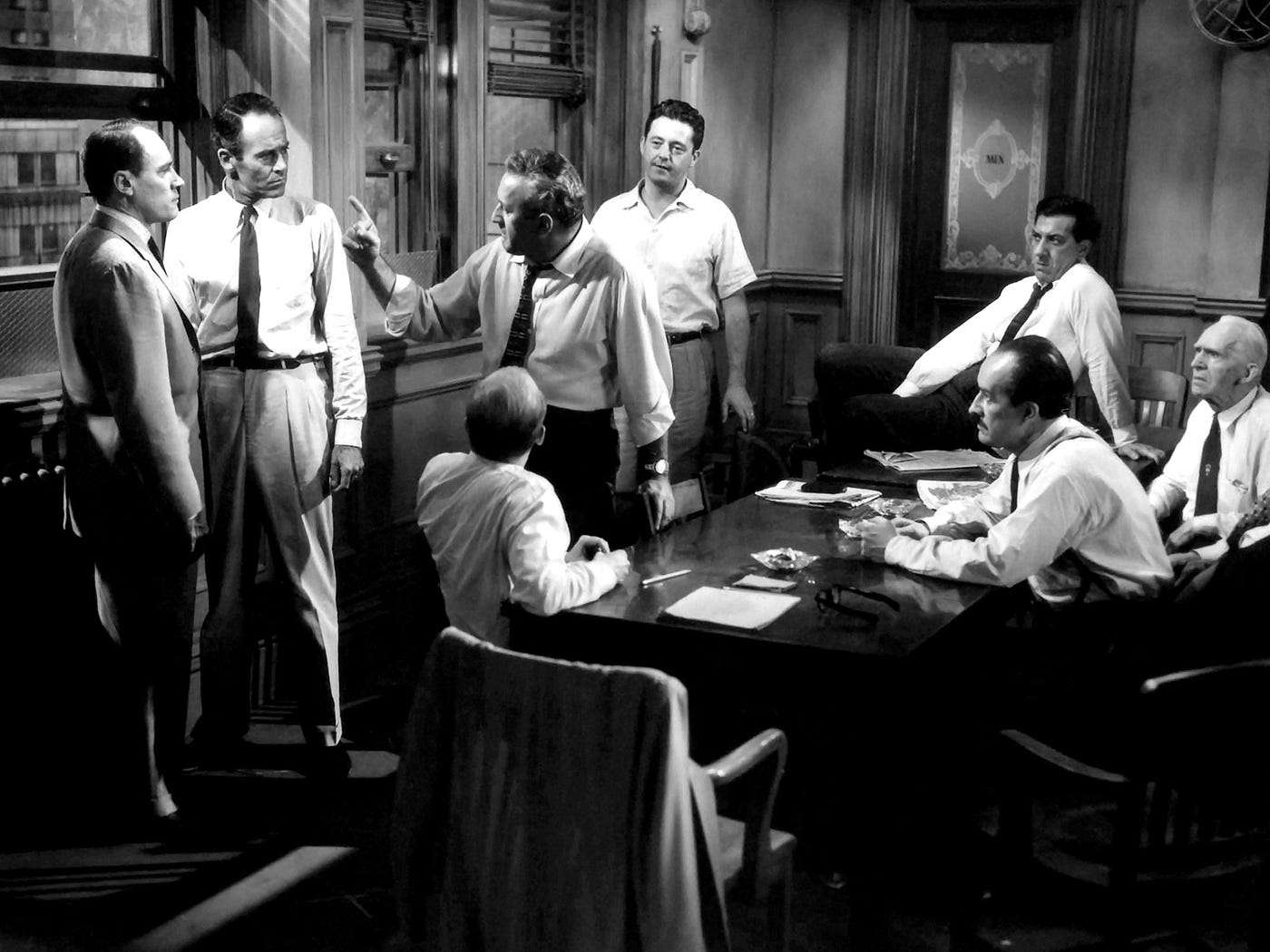
Confined to a sweltering New York Metropolis jury room on the most well liked day of the yr, twelve males grapple with the seemingly open-and-shut case of a younger man on trial for murdering his father. Their deliberations change into a microcosm of society, exposing ingrained prejudices, private anxieties, and the battle for a simply verdict. The movie opens with the closing arguments: the prosecution paints a convincing image of guilt, and the decide instructs the jury {that a} unanimous verdict is required. Contained in the jury room, an preliminary vote reveals eleven jurors favoring conviction, leaving Henry Fonda’s Juror 8 as the only real dissenter. His easy request – “Let’s simply speak about it” – units the stage for an intense examination of the proof and the jurors’ personal biases.
Every juror embodies a definite perspective formed by their life experiences and prejudices. Because the deliberations unfold, the movie cleverly makes use of its single setting to construct stress and suspense. The digicam meticulously strikes among the many jurors, capturing their reactions, arguments, and rising frustrations. The dialogue crackles with wit, stress, and moments of humor, showcasing the various personalities and clashing viewpoints inside the room.
12 Indignant Males stays a timeless masterpiece of minimalist storytelling. Lumet’s course is a masterclass in using area and framing to reinforce the narrative, and the claustrophobic setting of the jury room turns into a metaphorical strain cooker, intensifying the emotional stakes. Past its technical achievements, the movie is noteworthy for having sparked essential conversations concerning the American justice system, the risks of prejudice, and the significance of open-minded deliberation by means of its exploration of group dynamics.
19. Vertigo (1958)
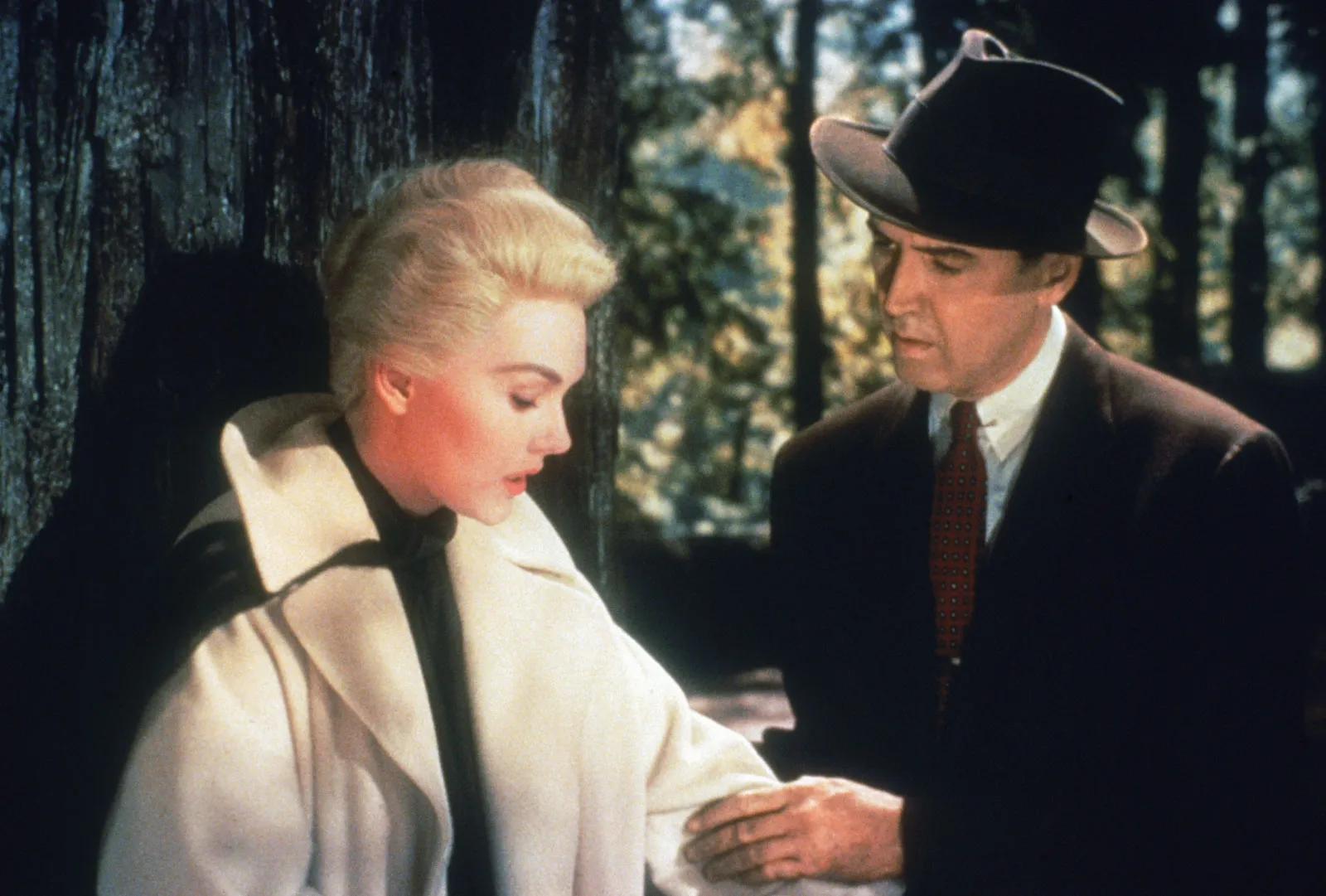
Popularly thought of to be amongst the best movies ever made, Vertigo’s mind-bending exploration of obsession, repressed wishes, and the blurring strains between actuality and phantasm has solely aged just like the most interesting wine. James Stewart delivers a hauntingly nuanced efficiency as Scottie Ferguson, a retired detective tormented by acrophobia. Drawn again into the world of personal investigation, he turns into consumed by a case involving Madeleine Elster (Kim Novak), a lady seemingly possessed by the spirit of her deceased ancestor.
However Scottie’s pursuit of Madeleine isn’t merely skilled; it’s a descent into obsession. The digicam, our unwavering companion, mirrors his distorted perspective, twisting and tilting in iconic sequences – just like the unforgettable “dolly zoom,” used on this movie for the primary time in historical past to create what’s now often called the “Vertigo impact.”
As Scottie unravels the mysteries surrounding Madeleine, his fragile actuality begins to fracture. His obsession reaches its tragic peak with Madeleine’s obvious suicide. Grief-stricken and guilt-ridden, Scottie encounters Judy Barton, a lady bearing an uncanny resemblance to his misplaced love. His subsequent manipulation of Judy reveals a darker facet to like, the place obsession can morph into harmful possessiveness.
Hitchcock’s use of shade, with vibrant hues for Madeleine and muted tones for Judy, underscores the movie’s thematic exploration of obsession and phantasm. Vertigo continues to encourage up to date filmmaking, and its affect could be seen in works starting from Brian De Palma’s Obsession to David Lynch’s Mulholland Drive, showcasing the enduring influence of Hitchcock’s storytelling prowess.
20. The Condominium (1960)
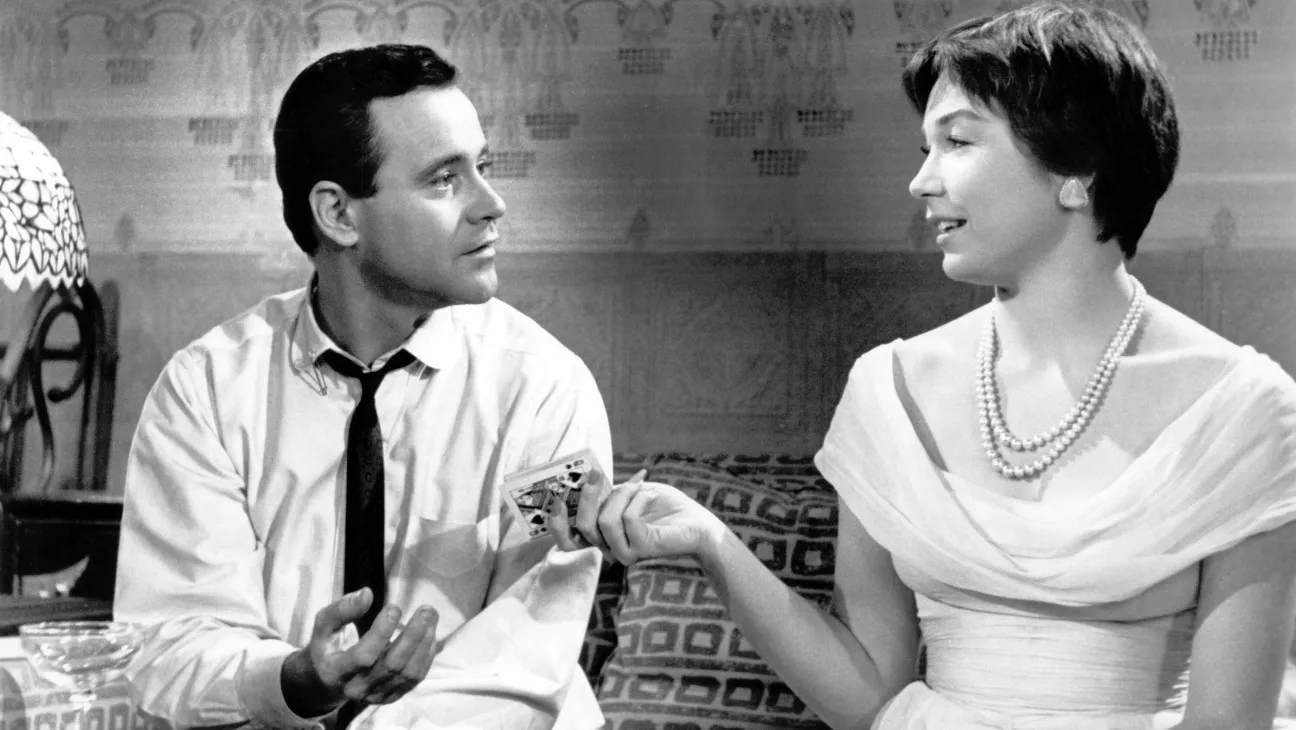
Billy Wilder’s 1960 masterpiece is a biting satire in addition to a poignant commentary on love, ambition, and the ethical compromises we make in a cynical world. The plot includes C.C. “Bud” Baxter (Jack Lemmon), a meek workplace drone who climbs the company ladder by renting his cozy Higher West Aspect residence for the illicit affairs of his superiors. This Faustian cut price propels him into an online of deception, threatening to dismantle his rigorously constructed persona when he falls for the charming elevator operator, Fran Kubelik (Shirley MacLaine).
Baxter’s ascent depends on self-deprecating humor and blind acquiescence. He readily turns into a doormat, lending his residence – a logo of his emotional unavailability – in alternate for promotions and recognition. This morally ambiguous association underscores the movie’s central themes: the human value of ambition and the isolation it brings about and the determined craving for real connection. Enter Fran, a vibrant spark of life amidst the company drudgery. Drawn to Baxter’s vulnerability and buried kindness, she varieties a reference to him, unaware of the sordid function his residence serves.
As their bond deepens, Baxter faces a stark alternative: expose the infidelity and jeopardize his profession or keep the charade, suppressing his personal emotions for Fran. Wilder’s masterful script doesn’t shrink back from complexity. Baxter’s humor masks a deep-seated loneliness, whereas Fran’s effervescence hides a painful previous. Via witty dialogue laced with double entendres, the movie peels again the layers of their motives, exposing the characters’ manipulative ways and hidden wishes. Adolph Deutsch’s jazz-infused rating completely captures the bittersweet ambiance, mixing humor with melancholic undertones. The Condominium received 5 Oscars, together with Finest Image, Finest Director for Wilder, and Finest Authentic Screenplay, and went on to encourage the 1968 Broadway musical Guarantees, Guarantees.
Additionally associated to the Golden Age of Hollywood: 10 Criminally Underrated Finest Image Oscar Winners
[ad_2]
